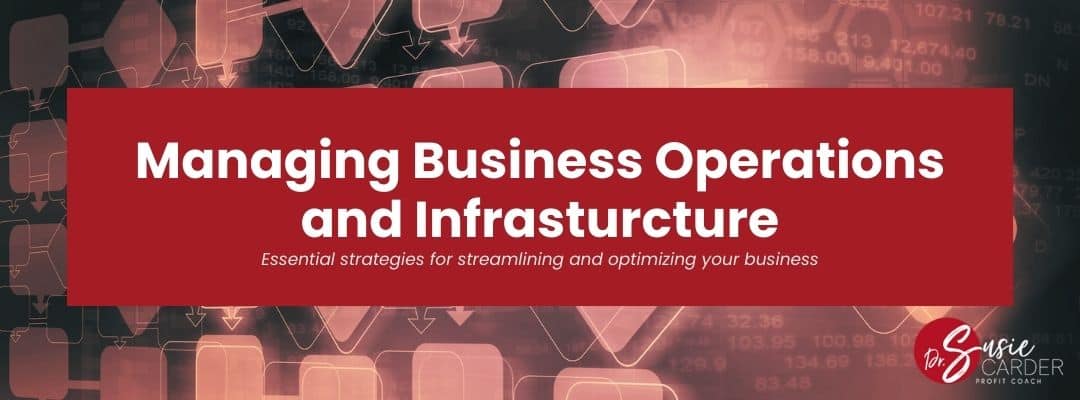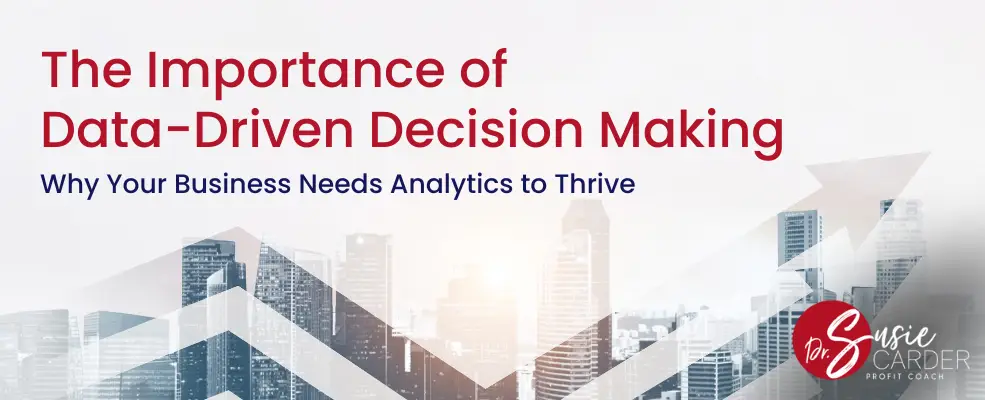As an Operations Manager, I know how crucial it is to have a solid foundation for your business. I’d like to share some insights on managing business infrastructure and operations. Trust me, it’s a game-changer.
In my role as a fractional COO and profit coach, I have helped countless established businesses break free from their slumps and achieve mind-blowing seven and eight-figure success. Whether you’re a small startup or a well-established corporation, optimizing your business infrastructure and operations is an important step of moving forward.
So, buckle up and get ready to learn the secrets of building a strong foundation for your business.
What is Business Infrastructure?
A solid business infrastructure serves as the foundation for success, it includes everything from office space to technology and equipment. Human resources are another crucial aspect, as having the right team in place is essential for smooth operations. Processes are the backbone of any business, and constant evaluation and improvement are necessary for efficiency. To achieve long-term success, it’s vital to focus on business growth. Hiring a fractional COO like me can provide valuable insights and strategies to help maximize profits and drive the business forward.
Physical Infrastructure
Now let’s take a closer look at the physical infrastructure aspect of business infrastructure. Physical infrastructure refers to the tangible assets that a business needs to operate efficiently. This can include office spaces, equipment, and even vehicles.
Investing in the right physical infrastructure is crucial as it directly impacts the overall performance and productivity of a business. For instance, having a well-designed office space can enhance employee comfort and collaboration, leading to improved efficiency. Likewise, having the right equipment and facilities can streamline production processes and minimize downtime.
Office spaces are more than just physical locations where employees come to work. They are environments that directly impact employee morale, productivity, and job satisfaction. A well-designed office space can foster a collaborative work culture, enhance employee comfort levels, and ultimately, boost productivity. From ergonomic furniture to advanced technological systems, every element in an office space contributes to creating an environment conducive to work.
Equipment forms an integral part of a business’s physical infrastructure. This can range from computers and software used in offices to machinery used in manufacturing processes. Investing in high-quality, reliable equipment can enhance operational efficiency and reduce downtime. Regular maintenance of equipment is also essential to ensure its longevity and optimal performance. For businesses involved in delivering goods or providing services on-site, vehicles are a vital part of their physical infrastructure. A well-maintained fleet of vehicles ensures timely delivery and service provision, thereby enhancing customer satisfaction. Vehicles can also serve as mobile advertisements, promoting the company’s brand wherever they go.
Physical infrastructure is a significant investment that can greatly influence a business’s success. By carefully planning and investing in high-quality, efficient physical infrastructure, businesses can create a strong foundation for growth and prosperity.
Human Resources
Now let’s dive into one of the key components of a successful business infrastructure: human resources. As an Operations Manager, I believe that the right team can truly make or break a company’s success. Imagine having a group of talented individuals who are not only skilled in their respective areas, but also aligned with the company’s values and goals. That’s the dream, right?
Recruitment is the first step towards building your dream team. HR plays a crucial role in this process, from creating compelling job descriptions to sourcing candidates, conducting interviews, and making final hiring decisions. The goal is to attract talented individuals who not only have the necessary skills and experience but also fit the company culture.
Training and development are essential for equipping your team with the necessary skills and knowledge to perform their jobs effectively. HR should provide ongoing training opportunities for employees to keep their skills up-to-date and to prepare them for future roles within the company. This not only enhances individual performance but also contributes to the overall success of the team.
Performance management is a continuous process that involves setting clear expectations, providing regular feedback, recognizing achievements, and addressing performance issues. An effective performance management system helps ensure that all team members are working towards the same goals and are contributing positively to the team’s success.
When it comes to human resources, it’s important to focus on finding the right people with the right skills and mindset. This means conducting thorough interviews, checking references, and even considering personality fit within the team. By investing time and effort into building a strong team, you’ll be setting your business up for long-term success.
But it doesn’t stop there.
Processes
Now that we have discussed the importance of a solid business infrastructure, let’s dive deeper into one of its main components: processes. I understand the crucial role that processes play in the success of a company. Well-defined and efficient processes are like the backbone of a business, ensuring smooth operations and maximizing productivity.
- Efficiency and Effectiveness: Processes streamline activities and reduce waste, leading to increased efficiency. They help to eliminate redundant tasks and ensure that every action adds value to the business. For instance, a well-designed sales process can significantly reduce the time it takes to convert leads into customers.
- Consistency and Quality Control: Processes ensure consistency in operations. When tasks are performed in a consistent manner, it leads to predictable outcomes and high-quality products or services. For example, a manufacturing process ensures that each product is produced exactly the same way, maintaining a standard of quality.
- Improved Communication and Collaboration: Clear processes facilitate better communication and collaboration among team members. Everyone knows their roles and responsibilities, which eliminates confusion and enhances teamwork.
- Risk Management: Processes help in identifying potential risks and establishing mitigation strategies. They provide a clear roadmap for handling unexpected situations and challenges.
- Scalability: Well-defined processes allow businesses to scale up operations without compromising on quality or efficiency. They provide a blueprint for growth that can be replicated across various parts of the organization.
- Customer Satisfaction: Effective business processes can lead to improved customer satisfaction. They ensure that customer interactions are handled professionally and consistently, leading to a better customer experience.
- Decision-Making and Strategic Planning: Business processes provide valuable data that can be used for decision-making and strategic planning. They offer insights into operational efficiency, productivity levels, and areas that need improvement.
Therefore, investing in the development and optimization of business processes can yield significant benefits for a company. It can lead to cost savings, improved performance, and sustainable growth. However, it’s important to remember that business processes should not be static; they should be regularly reviewed and updated to adapt to changing business needs and market conditions.

Combining Business Infrastructure and Operations: A Path to Maximum Efficiency
In today’s competitive business landscape, efficiency is the key to success. One area where this principle holds particularly true is in the integration of business infrastructure and operations. Let’s delve into what these terms mean, and why they’re crucial to your business.
Integrating infrastructure and operations can significantly improve a company’s efficiency and productivity. An integrated approach ensures that all parts of the business are working towards the same goal, eliminating wasteful practices, reducing costs, and fostering innovation.
Take Amazon as an example. Their infrastructure and operations are seamlessly integrated, with their state-of-the-art warehouses (infrastructure) supporting their e-commerce business (operations). This integration has been a major factor behind their phenomenal success.
Building an Integrated Approach
But how does a business go about integrating its infrastructure and operations? Here are some steps to consider:
- Aligning Objectives: Ensure that the objectives of your infrastructure and operations are aligned. They should support each other and work towards the overall business goals.
- Streamlining Processes: Look for ways to streamline your processes. Eliminate redundant tasks and automate wherever possible.
- Integrating Technology: Technology can be a powerful tool for integration. Use software and platforms that allow different parts of your business to communicate and collaborate effectively.
- Continuous Improvement: Make continuous improvement a part of your culture. Always look for ways to make your infrastructure more supportive and your operations more efficient.
Overcoming Bottlenecks
Identifying and addressing bottlenecks is crucial for successful integration. Use data analysis and feedback from your team to identify areas where your operations are being slowed down by your infrastructure, or vice versa. Then, take targeted action to address these issues.
By taking a proactive approach to integration, businesses can enhance their efficiency, improve their productivity, and set themselves up for long-term success.
Remember, the journey toward integration is a marathon, not a sprint. But with patience, persistence, and a focus on continuous improvement, businesses can build a robust, integrated system that drives growth and success.
Analyzing Performance
It is crucial to constantly monitor and evaluate how well our business is performing. By analyzing performance metrics, we can identify areas of improvement and make data-driven decisions. One key aspect of analyzing performance is setting clear objectives and tracking progress toward them. This allows us to measure our success and adjust as needed.
Additionally, we utilize various tools and software to gather and evaluate data, such as sales reports and customer feedback. These insights help us identify trends, spot opportunities, and address any issues that may arise. By regularly analyzing performance, we can ensure that our business is operating at its highest potential and continuously improving.
Conclusion
By combining business infrastructure and operations effectively, you can ensure that your company is running like a well-oiled machine. This involves streamlining processes, optimizing resources, and implementing efficient systems. A Fractional COO or a profit coach like me can provide valuable insights and guidance in managing and improving your business infrastructure and operations.
To stay ahead of the curve, it is important to constantly evaluate and adapt your business infrastructure and operations to meet the changing needs of the market.







